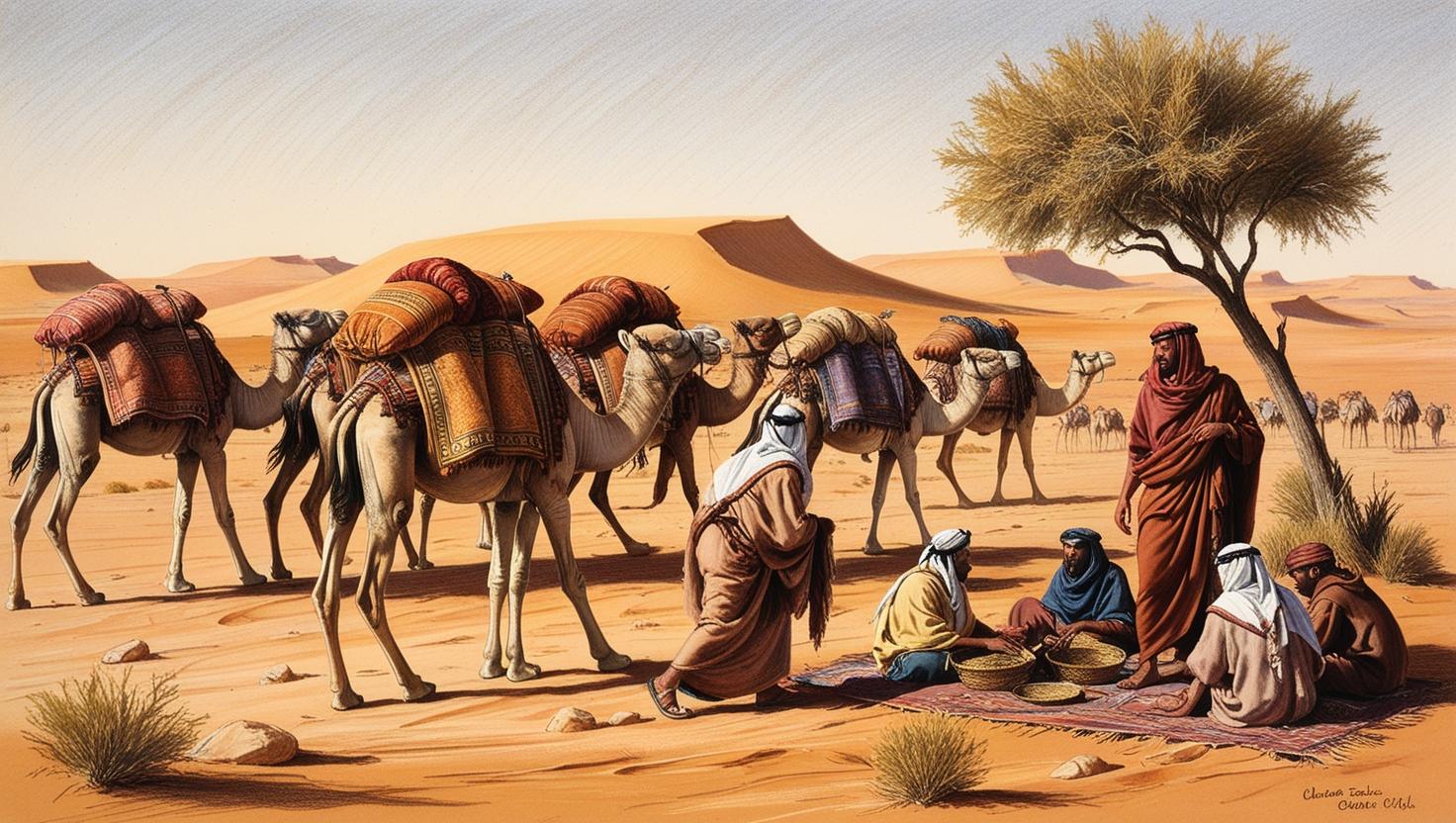

According to Muslims' belief, the Prophet Muhammad ﷺ is the best of all of God's creation. This is because the human being is the best of all creatures (the 'khalifa' or deputy of God) and the Prophet is the best of all human beings. Michael Hart, in his book "The 100: A Ranking of the Most Influential Persons in History" ranked Muhammad ﷺ as the most influential person in the whole of human history. No-one can deny the huge impact the Prophet had on the subsequent history of the world.
Muhammad ﷺ grew up in the desert town of Makkah, considered sacred by all Arabs as it contained the Ancient House built by the prophets Abraham and Ishmael. He was born into a noble family but had a relatively impoverished childhood. His father had died before he was born, and his mother died when he was only five years old. He was taken under the custody of his grandfather, Abdul Muttalib, who was considered the leading chief of the Quraysh tribe. Later, when his grandfather died, Muhammad ﷺ was looked after by his uncle, Abu Talib. He worked as a shepherd in his youth. Later, he worked as an agent for a wealthy widow by the name of Khadeeja, and he impressed her so much that she soon married him.

Muhammad ﷺ was a contemplative man who shunned the idol-worship of his townsmen, and liked to spend time by himself in a cave on a mountain near the town. He became in the habit of spending the entire month of Ramadan every year up on the mountain, and Khadeeja would send supplies up for him. It was here, at the age of forty, that he received his first revelation through the Angel Gabriel.
He was commanded by God to warn people of the Day of Judgement, when they would be taken to account for their actions, and the punishment of the Hereafter, and give good news to those who believe in God and do good. He was commanded to establish regular prayer, feed and protect the poor and needy, take care of orphans, refrain from lying, cheating, cruelty and all forms of injustice. He began with preaching to his close family and friends, and later his wider clan and tribe. He condemned the Quraysh and the Arabs for idol worship (associating partners with the True God); and their cruelty and injustice towards those poor and orphans who did not have the protection of a powerful tribe; and their disgraceful practice of burying alive their female offspring.

Many of his tribe, especially from the poorer classes, responded to his call, but the wealthy elite of Makkah were concerned that the new religion would mean losing their prestige and economic advantage among the Arabs. They tried to bribe the Prophet to abandon his message and, when that failed, they resorted to violence and persecution.
The early Muslim converts in Makkah were harassed, beaten, imprisoned, tortured, and oppressed by the Quraysh. Economic and social sanctions were imposed upon them for three years until the Muslims found themselves eating the leaves of trees in desperation.
After 13 years of patient preaching in Makkah, the persecution reached such a level that the Prophet was forced to emigrate to the town of Yathrib, where many Arabs had already embraced Islam.
The Emigration to Yathrib (which became known as Medina) was an important turning point in the Mission of the Prophet, because it marked the beginning of the first Islamic Realm (dar al Islam). Later on, when the Islamic calendar was introduced, the year of the Hijra was designated as Year 1.
%2C%20featuring%20numerous%20date%20palm%20trees%20casting%20long%20shadows%20across%20a%20landscape%20of%20small%2C%20sun-baked%20mud-brick%20houses.jpg)
In Medina, the Prophet was recognised as the Deputy of God (khalifa) and given supreme authority. The Prophet drew up a written treaty with the Jewish clans in Medina, and allowed them to follow their own religion, laws and customs, but recognising the Prophet's overall authority.
The Emigrants from Makkah, the Muhajirun, were united in new bonds of Islamic brotherhood with their Yathribi Helpers, the Ansar. As Islam consolidated and continued to spread, several battles took place between the Muslims and Arab tribes who still opposed the new faith. The Jews, in their arrogance, were unable to accept an Arab as the Final Prophet despite the knowledge they held about him, and decided to align with the idol-worshippers.
The first major clash took place at Badr, where a force of about 300 Muslims faced a thousand warriors of the Quraysh. The Quraysh had superior numbers and were better equipped, but the Muslims had the Prophet in their midst. He implored his Lord for victory, saying: "If this small band of Muslims is destroyed. You will not be worshipped on this earth."
As the Battle commenced and the Quraysh rushed forward, arrogant and confident of victory, God sent down 3000 angels led by Gabriel to assist the believers.
The Battle of Badr was the symbolic victory for the new faith. Other battles took place, and the Prophet was strong enough to march into Makkah within a few years and reclaim the town of his birth for Islam.
After Makkah and the Quraysh had come under Islam, the rest of the tribes slowly but surely followed. By the time of the Prophet's death in 632, most of Arabia had become united under him, and the Islamic Realm was poised to expand beyond the Arabian Peninsula, carrying the message of monotheism and social justice to the world.